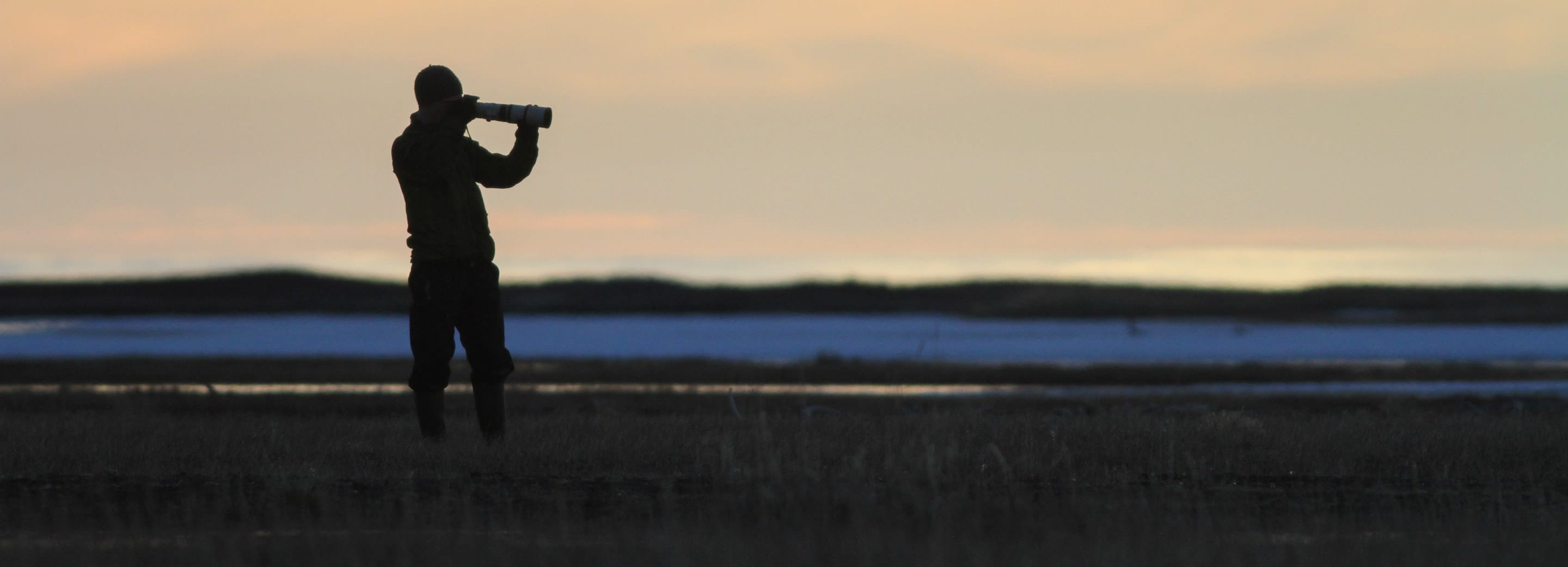In late September, Manomet will be joining with its partners, the US Fish and Wildlife Service, Audubon Alaska, Friends of Alaska Wildlife Refuges and Manomet, to fete the world’s most remarkable athletes, navigators and survivalists: the thousands of birds that migrate annually to the Arctic National Wildlife Refuge.
The Arctic Refuge Virtual Festival of Birds, held online from September 24-28, will take participants to a place few will ever visit in person – to the Coastal Plain of the Arctic Refuge. Through videos, photos, live events, games, contests and other activities, festival “goers” will get an insider’s look at the short but incredibly productive summer season in the Arctic Refuge through the experiences of biologists, conservationists and the birds themselves.
The event will be hosted on the Facebook page of the Arctic Refuge, and cohosted by Audubon Alaska, Manomet and Friends of Alaska Wildlife Refuges. Each organization will have its own festival content on its respective Facebook pages as well as through other social media channels.
The Coastal Plain of the refuge is the summertime breeding, brooding and respite spot for more than 200 species of birds who arrive via five different flyways from five continents and from thousands of miles away.
Maybe you’ve seen them. The incredible flocks of 300,000 semipalmated sandpipers, landing after a week of non-stop flight to fuel up along the beaches of New York. You may have spotted graceful groups of tundra swans paddling on a wintery lake in Oregon, hunted a long-tail duck or a cackling goose during the crisp Michigan fall, or met the silent gaze of a snowy owl in Minnesota. Whether your home is along the Pacific, Atlantic, Central, Mississippi or Australasia flyway, you have a connection to birds that nest in Arctic.
In a remarkable display of parental confidence, sandpipers will begin their own migration south within two weeks after their eggs hatch, leaving the chicks to continue growing up alone on the tundra. Around the middle of August, the chicks will also begin their journey.
Shiloh Schulte, a Manomet biologist who spends several weeks each summer in the refuge, marvels at the feat: “These little sandpipers never having flown anywhere before, no parents, they just get up in the air in these flocks and they fly in a certain direction for a certain length of time, then turn and fly in a different direction for a certain length of time, for days and days and then find a place to land, refuel, and then do that again and sometimes a third time before they get to the wintering grounds in mid-September or October.”
The festival will feature near real-time updates on the location of sandpipers and other birds thanks to the transmitters placed by Schulte and his colleagues as they make their way to their South American wintering grounds.
Join us online for their remarkable stories and many others!





 Back to all
Back to all